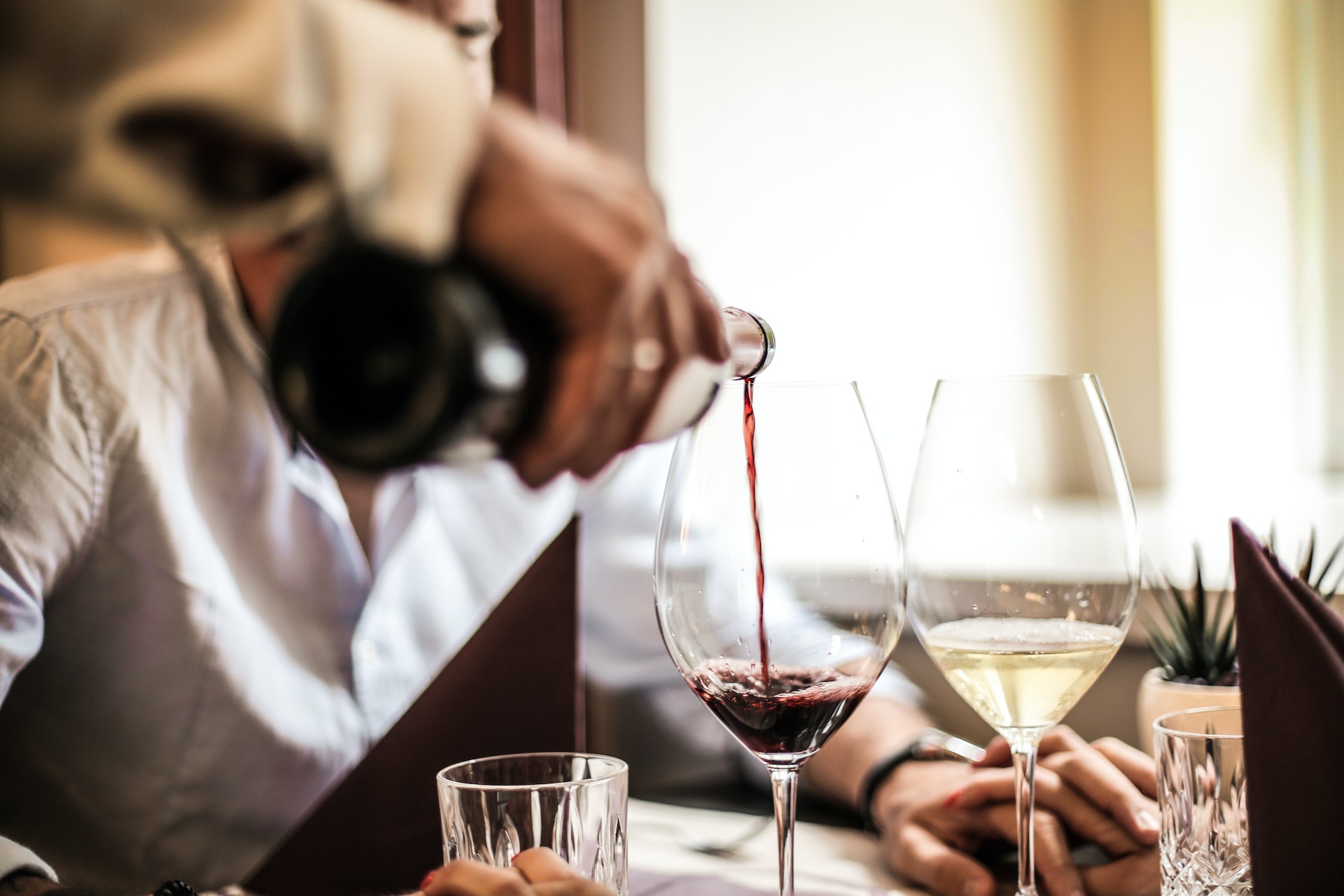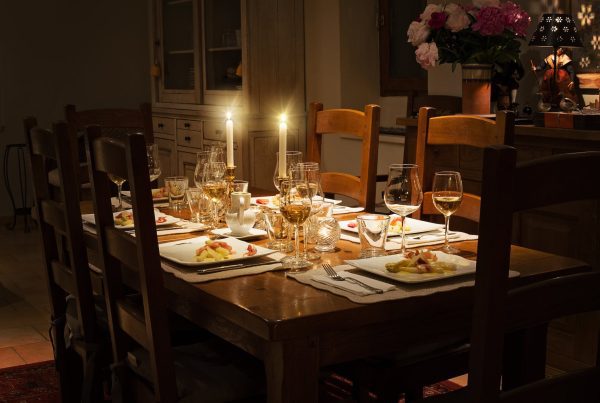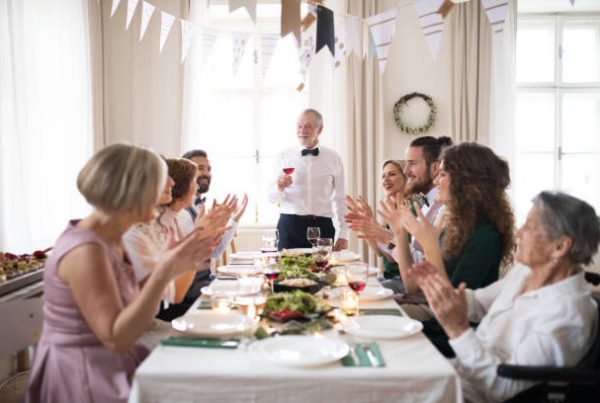How Does Wine Pairing Work?
Wine pairing is an art form that has been perfected over centuries. It’s the harmonious marriage of food and wine, where each element enhances the other, creating a symphony of flavours that tantalise your taste buds. But how does wine pairing work? Let’s delve into the world of wine and food pairing, guided by the expertise of Scott from Private Chef Direct.
With his extensive knowledge of culinary techniques and a deep understanding of wine, Scott has honed the craft of wine pairing to perfection. His passion for food and wine, coupled with his professional experience, allows him to create pairings that elevate the dining experience to new heights. Join us as we explore the fascinating world of wine pairing.

The Science Behind Wine Pairing
Wine pairing is not just about matching red wine with red meat and white wine with fish. It’s a complex process that involves understanding the chemistry of food and wine. The primary factors to consider are the body, acidity, sweetness, and tannins of the wine.
- Body: The body of a wine refers to its weight or fullness. Full-bodied wines like Cabernet Sauvignon pair well with hearty dishes, while light-bodied wines like Pinot Grigio are better suited to lighter fare.
- Acidity: Acidic wines can balance out rich, fatty foods. For instance, a zesty Sauvignon Blanc can cut through the richness of a creamy pasta dish.
- Sweetness: Sweet wines can complement spicy foods by cooling the palate. A classic example is the pairing of spicy Thai food with a sweet Riesling.
- Tannins: Tannins, found in red wines, can soften the fat in meat, making it taste more tender. This is why a tannic wine like a Barolo pairs wonderfully with a juicy steak.
The Art of Wine Pairing
While the science of wine pairing is important, it’s also an art that requires intuition and creativity. Here are some tips to help you master the art of wine pairing.
Complement or Contrast
When pairing food and wine, you can either complement the flavours or create a contrast. For example, a buttery Chardonnay complements a creamy lobster bisque, while a crisp, acidic Chenin Blanc contrasts beautifully with a rich, oily fish like mackerel.
Consider the Sauce
The sauce or seasoning can often be the dominant flavour in a dish. Therefore, it’s essential to consider this when choosing your wine. For instance, a spicy tomato sauce might pair better with a robust red wine, while a delicate lemon butter sauce might call for a light, citrusy white wine.
Don’t Forget Dessert
Dessert wines are often overlooked, but they can be the perfect end to a meal. The key is to ensure the wine is sweeter than the dessert. A luscious Sauternes, for instance, pairs beautifully with a tangy lemon tart.
Wine Pairing Myths Debunked
There are many myths surrounding wine pairing that can often lead to confusion. Let’s debunk some of these myths to give you a clearer understanding of how wine pairing works.
- Red wine with meat, white wine with fish: While this is a good rule of thumb, it’s not set in stone. A light red wine like a Pinot Noir can pair beautifully with salmon, while a full-bodied white wine like an oaked Chardonnay can stand up to a roast chicken.
- Sweet wines are only for dessert: Sweet wines can actually pair wonderfully with a variety of foods, especially spicy and salty dishes.
- Expensive wines are always better: The best wine is the one you enjoy. Don’t be afraid to experiment with different wines in different price ranges.
The Joy of Experimentation

The world of wine pairing is vast and varied, and the best way to learn is through experimentation. Don’t be afraid to try unconventionalpairings and discover what works for you. Remember, the best wine pairing is one that brings you joy and enhances your culinary experience.
The Role of a Sommelier in Wine Pairing
A sommelier is a trained wine professional who specialises in all aspects of wine service, including wine and food pairing. They possess extensive knowledge of how different wines interact with different foods, and they use this knowledge to guide diners in making the perfect wine selection.
A sommelier’s role in wine pairing involves:
- Understanding the diner’s preferences: A sommelier will ask about your taste preferences to recommend a wine that you’ll enjoy.
- Considering the menu: They will consider the ingredients, cooking methods, and flavours of the dishes on the menu to suggest a wine that will complement or contrast the food.
- Balancing the flavours: A sommelier will aim to balance the flavours of the food and wine so that neither overpowers the other.
- Enhancing the dining experience: Ultimately, a sommelier’s goal is to enhance your dining experience by helping you discover new wines and enjoy your meal to the fullest.
Wine Pairing: A Journey of Discovery
Wine pairing is a journey of discovery that can deepen your appreciation of both food and wine. It’s about exploring new flavours, textures, and aromas, and learning how different elements interact to create a harmonious whole.
Whether you’re a seasoned wine connoisseur or a curious beginner, the world of wine pairing offers endless opportunities for exploration and enjoyment. So why not embark on your own wine pairing adventure? Remember, the world of wine is vast and varied, and the joy of wine pairing lies in the journey of discovery.
At Private Chef Direct, we believe that every meal should be a celebration. That’s why our private chef Scott uses his award-winning culinary skills to create exquisite dining experiences that perfectly pair food and wine. So why not book a private chef today and discover the magic of wine pairing in the comfort of your own home?
Frequently Asked Questions About Wine Pairing
Wine pairing is the practice of matching wines with specific foods to enhance the dining experience. The goal is to create a balance between the flavours of the food and the characteristics of the wine, so that they complement each other and create a harmonious taste experience. This involves considering various factors such as the body, acidity, sweetness, and tannins of the wine, as well as the ingredients, cooking methods, and flavours of the food.
The two basic rules of wine pairing are:
Match the weight: Pair light-bodied wines with lighter foods and full-bodied wines with heavier, richer foods. This ensures that neither the food nor the wine overpowers the other.
Balance the flavours: Try to balance the flavours of the food and wine. For example, a sweet wine can balance out spicy food, while an acidic wine can cut through the richness of fatty food.
Typically, wine pairings are not full glasses. When multiple wines are being paired with different courses during a meal, it’s common to serve smaller pours, often around half the size of a standard glass. This allows you to enjoy a variety of wines without becoming too intoxicated and also ensures that the flavours of the wine do not overwhelm the food.
Choosing a wine for pairing depends on the dish you’re serving and your personal taste preferences. Consider the dominant flavours in the dish and look for a wine that will complement or contrast these flavours. Don’t be afraid to experiment and try different combinations. Remember, the best wine pairing is one that you enjoy.
Absolutely! Wine pairing is not limited to meat and fish dishes. Vegetarian and vegan dishes can also be paired beautifully with wines. For example, a crisp white wine like Sauvignon Blanc can complement a fresh salad, while a full-bodied red wine like Cabernet Sauvignon can stand up to a hearty lentil stew. The same principles of matching the weight and balancing the flavours apply.




